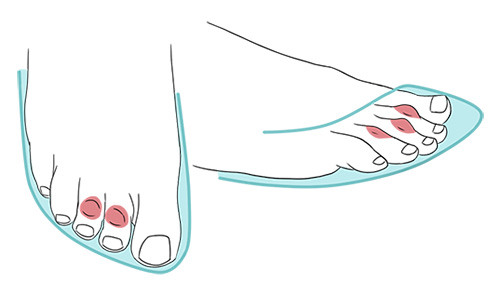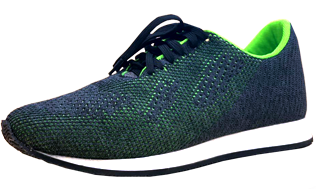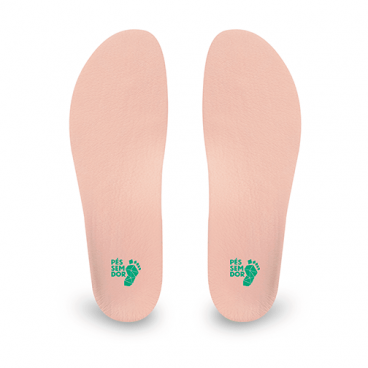Calluses on the feet
Callus is the thickening of skin layers as a response from our body to some external stimuli, such as friction and local hyper-pressure. This thickening protects the innermost layers of the region where these calluses form. Calluses usually don’t cause pain, but they can sometimes cause discomfort. When untreated, they can affect multiple layers of the skin, becoming deep and painful. According to the study “Multiple calluses on the Plantar Surface of the Foot”, calluses are the third most common foot deformity, often in the elderly.
The medical term for calluses is hyperkeratosis which refers to an excessive accumulation of keratin in the affected area, causing the region to become thicker and hardened. Hyperkeratosis may be associated with various diseases such as arthritis, arthrosis, local circulatory disorders, diabetes, and poorly healed fractures. In severe cases, calluses can modify regular walking when they affect deeper layers of the skin, causing the individual to change the step to protect the affected region instinctively.
There is a subtle difference between callus and callosity. The callus generally affects a broader area; it is flat and dry, leaving the skin thick and flaky. The callosity is more localized and usually has a circular or conical shape with a more dry center. They can be classified as hard or soft. Hard calluses are the most common and occur in areas with harder skin, usually in a yellowish appearance. Soft calluses are whitish and rubbery, often occurring between the toes.
A recent survey showed that within a year, more than 46% of Brazilians had calluses on their feet and that women have twice as many calluses as men. The appearance of calluses is usually related to the friction of the foot with the shoe or excessive pressure exerted during walking or running. Generally, the most susceptible regions are located over bony prominences: on the sole (due to hyper-pressure) and on the toes’ top (due to friction with shoes).
The most common places for calluses to appear are:
– Metatarsals: located on the soles of the feet in the region before the fingers, metatarsal calluses can be localized (affecting only one joint) or diffuse (affecting all joints in the region);
– Side of the 5th toe: callus on the smallest toe, very common in people who have excessive supination (step outside) or use narrower shoes in the toe region;
– Lateral of the 1st toe: callus on the biggest toe, very common in people who have excessive pronation (step inwards), runners, women who wear high heels or who wear very narrow shoes in the toe area, and people with bunions;
– Between the toes: typically affects the space between the 4th and 5th toes. It is also associated with narrow shoes, occurring due to friction in the area when walking;
– Heel: more common on the posterior border of the region, where the shoe rubs, causing the skin to react by increasing its thickness. It can also appear on the sole as the result of powerful stepping in the region;
– Achilles tendon: individuals who run or women who constantly wear sandals with posterior straps are more susceptible to calluses in this region;
– Medial longitudinal arch: occurs in people with low foot curvature (flat feet) and excessively pronated footsteps (step inwards).
CAUSES
Vascular or endocrine diseases are major causes of calluses. Diabetic patients and the elderly are more likely to develop them, but the leading causes of callus formation are:
– Poorly adapted shoes, which will leave the feet without space, causing friction in the toes, or shoes that are too wide, allowing the foot to move inside the shoe, causing more friction and calluses;

– Misalignments during walking, which cause greater pressure in specific regions and, consequently, calluses;
– Type of occupation because if the work requires long-standing periods, long walks, or exercises with a lot of load and repetition, the person may have more friction with shoes or higher pressures.
– Activities that require excessive effort from a specific region of the foot, such as ballerinas, truck drivers, and drummers, develop calluses to protect the site;
– The constant use of shoes with a narrow toe box, very high shoes with a considerable height of the heel compared to the metatarsals and toes;
– Being overweight causes people to modify their step balance and consequently increase the impact of the foot on the ground;
– Intense physical activity associated with inadequate footwear or practicing high-impact sports that do not use insoles to correct the step.
As we age, the anatomy of our feet changes. Bones, joints, muscles, tendons, and ligaments are overloaded, changing their structure and making walking difficult.
One of the main problems that occur in the foot of the elderly is the loss of fatty tissue on the soles of the feet, making the bones more exposed to the walking impact and favoring the appearance of calluses and callosities.
The skin also changes as we age, becoming thinner, more fragile, and dry, especially on the feet. This makes the skin more likely to open, causing fissures and cracks that can develop into chronic, difficult-to-heal wounds if left untreated.
The calluses on the top of the fingers are also a significant problem in the elderly. The fall of the metatarsals and the reduction of adipose tissue in this area favor the appearance of claw and hammer toes.
HOW TO DIAGNOSE
People generally start by looking for a podiatrist, who will assess the general appearance of the callus and diagnose whether there is a need to look for other professionals. You can also look for an orthopedist and a dermatologist to check for joint problems, excess uric acid in the body, or if there are microorganisms in the lesion, such as fungi and bacteria. Finally, if the patient has diabetes and presents symptoms of callus or calluses, he should seek a Vascular doctor or Endocrinologist for better diagnosis and treatment of the disease.
PREVENTION AND TREATMENT
The cause of callosities must be uncovered to treat them effectively. It would be best if you avoided tight shoes that cause friction with the foot and toes, and it is recommended to use insoles that will better distribute pressure. Some other ways to prevent and treat calluses:
– Trim calluses to relieve discomfort (treatment with a podiatrist is recommended);
– Use of toe separators and callus protectors;
– Use of creams and emollients for skin hydration;
– Use of creams containing salicylic acid, as this acts on the dissolution of hardened keratin;
– Use of antibiotics in cases of fungal and bacterial infection;
– Surgery to correct foot joints or deformities caused by excessive skin friction;
– Use of Feet Without Pain insoles and shoes.
FEET WITHOUT PAIN® CUSTOM SHOES AND INSOLES FOR CALLUSES
Feet Without Pain custom-made insoles realign the footstep and redistribute pressure on the sole, removing the hyper-pressure points that cause calluses. In addition, they also provide support for the heel and arch of the foot, which improve the foot’s adherence to the shoe, reducing friction and preventing the formation of calluses.
On the other hand, custom-made shoes are made perfectly for your feet’s size, width, and circumference since they avoid chafing points or any looseness that makes your foot slide inside the shoe. It prevents calluses formation.

Feet Without Pain Custom Unisex Shoes | You can choose from over 20 men’s and women’s shoe models
The custom-made insoles and shoes are made with 3D technology and millimetric digital precision after a free foot, ankle, and knee evaluation with our specialists at one of our branch offices. Check some of their benefits for your feet below:
- Elimination or reduction of pain;
- Injury prevention;
- Increased comfort;
- Perfect fit;
- Standing longer without pain or discomfort;
- Prevention of pathologies progression;
- Improved impact absorption;
- Improved sports performance.
FREQUENTLY ASKED QUESTIONS (FAQs)

How to purchase your custom shoe or insole?
It’s fast and easy! Schedule a free evaluation of your feet with our specialists to buy your custom-made shoe.
Call, send a message to WhatsApp at 4003-8883, or visit: www.pessemdor.com.br/agendamento.
How does the evaluation work?
Upon arriving at a Feet Without Pain branch office, you will be received by a foot, ankle, and knee specialist, who will then fill out a registration form and ask some questions about your pain. Next, the assessment of the feet begins.
The specialist will examine your feet to understand your foot pains and complaints. Then, using the high-precision 3D scanner device, the specialist captures your feet’ measurements.
We are the only company with a 3D scanner for designing custom shoes. First, with the measurements of your feet, a mold is created using 3D printers, and after that, we start making your shoe.
How long does it take for the shoes and insoles to be ready?
Feet Without Pain produces custom-made shoes in up to 3 days; then, they are sent to your home free of charge!
Is the evaluation free?
Our assessment is completely free! We perform a complete analysis of your feet and legs, and you pay nothing for it!
Do we accept medical insurance?
We do not work with insurance because our assessment is completely free! But you can check if your plan somehow refunds you regarding the shoes!
EXTERNAL LINKS
1) Calos e calosidades | Podologia





